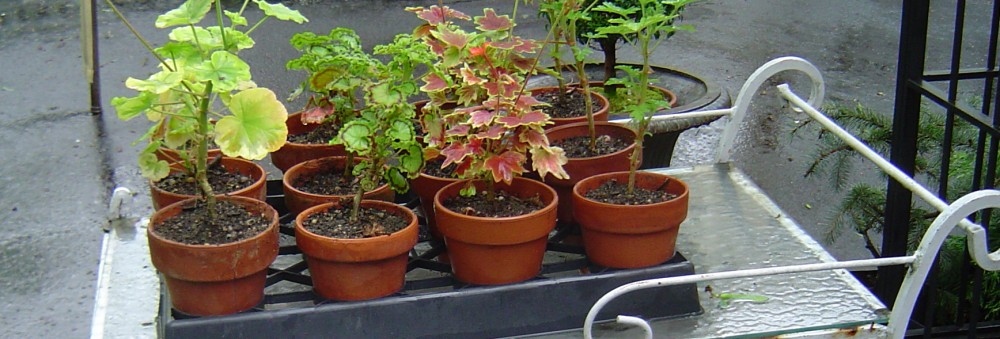Thirty years ago, we, a young couple bought this property. Not having family to guide us in this milestone event, we were naive and pretty much flying blind. Well meaning friends had lots of advice most of which we found puzzling or confusing. Some referred to it as a ‘good starter house’. Starter house? An old house on a quarter acre within walking distance to the center of town, the library, post-office and train station seemed quite right for us. For us, it looked perfect. A well-built house with three bedrooms felt spacious and the space outside was just the ideal size for us to do all the work by ourselves. We really couldn’t ask for more. And we still don’t.
While the house was sound but needed some updating, the property had been vacant for more than a year. There was no garden to speak of – it was a mess. Weeds had quite literally become trees and the adjoining woods in the rear had started moving. After much clearing and tidying through the first year, what we had was a blank canvas. Realizing my dream of a garden could commence. My own garden. My first garden. A real garden – the handful of plants in pots that I’d nurtured in college did not count. The fact that until now I’d only lived in apartments in big cities did not daunt me. Having spent my childhood in India meant I was going to have to learn all about a whole new range of plants. That did not bother me either – after all, if nothing else, graduate school teaches one to research any topic very well. This was before Internet and search engines – the ‘old-fashioned’ way. I had always dreamed of creating a garden of my own and I was ready.
I applied common sense, techniques I’d observed in India, design ideas learned from visiting countless gardens across three continents, and the knowledge I’d acquired as a scientist. Simultaneously, I read up on American plants and gardening in the north-east. While the plants were new to me, how I went about creating my garden was pretty much based on the aforesaid facts. I knew that composting, collecting rain water and applying strictly organic methods were non-negotiable practices for my garden. All of which made several people call me quaint and downright old-fashioned. These were the heydays of Round Up, copious applications of chemical fertilizers and endless use of water. I was not offended by the adjectives. It actually amused me that time tested, sound ecological methods were being mocked.
Very early on, my husband and I were busy one weekend creating two beds for perennials in the front garden. We were placing bricks to delineate/edge the beds. At different times, passersby would stop to watch and make conversation and it was interesting how often we were told that they had very recently seen Martha Stewart demonstrate this same style of brick edging and how trendy it was. Hearing this made us laugh after the well-meaning person had moved on. We were actually emulating a very common and old style of edging done in India and in many other counties. There was absolutely nothing new about it. To be fair, when I later checked it out, Martha herself was not taking personal credit for it either.
After seeing the enormous waste of time, effort and resources like water, I determined that it was futile to try maintaining a lush grass lawn in the lower back garden. And that’s how the concept of a ‘meadow’ of bulbs and native plants was born. Similarly, the handkerchief sized lawn in front was happily permitted to include clover and such – all I wanted was a restful, green canvas to contrast with the exuberant flower beds. Pristine lawn was decidedly unwelcome. It simply felt healthier and correct this way.
Judicious application of organic pest control has been a mainstay – Neem, dormant oil, and baking soda are used only as needed. Compost acts as both fertilizer and mulch almost everywhere. In flower beds, layers of cardboard and/or layers of newspaper are first put down over the soil and around the plants and then topped with cedar bark chips to mulch and at the same time look attractive. As paper and chips degrade, they enrich the soil. Mulching works marvelously to suppress weeds and hold in moisture.
The very small bits of ‘lawn’ are mowed with a manual reel mower with the blade set at 4 inches. Clippings are left to revert back to the earth. Similarly, we’ve never used gas powered leaf blowers. An electric blower is used after good old-fashioned raking has done most of the job.
“Old-fashioned” methods they are all. I proudly garden on the shoulders of past generations of gardeners who knew better and did what was good for the earth and all her inhabitants. As I’ve mentioned many times, gardeners are stewards of the land. That is a responsibility I take very seriously. Call me old-fashioned. Please.
Note: Next week, I will share an urban garden that is also ‘old fashioned’ but blows my mind! Stay tuned.
Here are some ‘before’ and ‘at present’ images of my garden. It’s come a long and I’ve enjoyed the journey. The garden is still evolving as a garden must. I wish I had more of the ‘before’ photos but, in those days, the i-phone was but an idea.
Before –





Now –

The tiny ‘lawn’ in front. It’s actually full of insect friendly tiny plants.





Note the rain barrel


The path through the meadow is all the mowing that happens in the back.

Meadow in May


(c) 2023 Shobha Vanchiswar
[do_widget “Blog Subscriptions (Jetpack)”]
Like this:
Like Loading...

















































































































